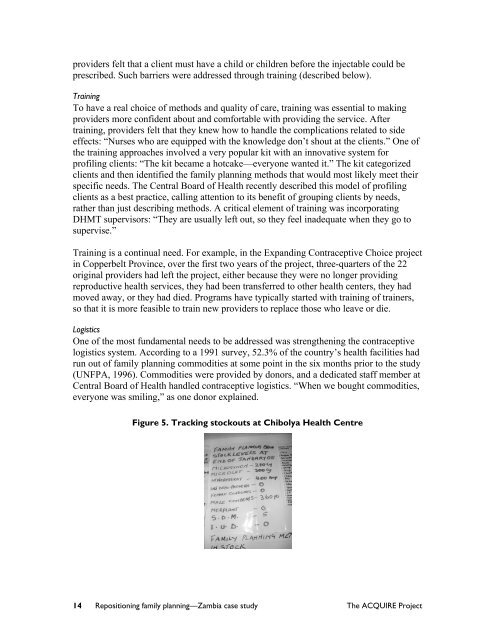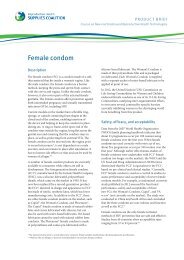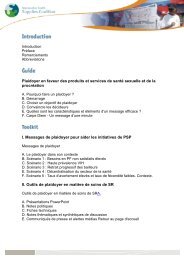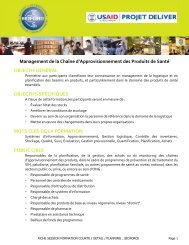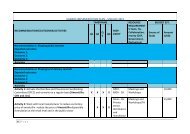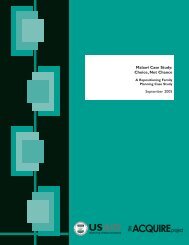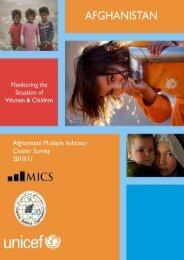Zambia Case Study: Ready for Change - Reproductive Health ...
Zambia Case Study: Ready for Change - Reproductive Health ...
Zambia Case Study: Ready for Change - Reproductive Health ...
Create successful ePaper yourself
Turn your PDF publications into a flip-book with our unique Google optimized e-Paper software.
providers felt that a client must have a child or children be<strong>for</strong>e the injectable could be<br />
prescribed. Such barriers were addressed through training (described below).<br />
Training<br />
To have a real choice of methods and quality of care, training was essential to making<br />
providers more confident about and com<strong>for</strong>table with providing the service. After<br />
training, providers felt that they knew how to handle the complications related to side<br />
effects: “Nurses who are equipped with the knowledge don’t shout at the clients.” One of<br />
the training approaches involved a very popular kit with an innovative system <strong>for</strong><br />
profiling clients: “The kit became a hotcake—everyone wanted it.” The kit categorized<br />
clients and then identified the family planning methods that would most likely meet their<br />
specific needs. The Central Board of <strong>Health</strong> recently described this model of profiling<br />
clients as a best practice, calling attention to its benefit of grouping clients by needs,<br />
rather than just describing methods. A critical element of training was incorporating<br />
DHMT supervisors: “They are usually left out, so they feel inadequate when they go to<br />
supervise.”<br />
Training is a continual need. For example, in the Expanding Contraceptive Choice project<br />
in Copperbelt Province, over the first two years of the project, three-quarters of the 22<br />
original providers had left the project, either because they were no longer providing<br />
reproductive health services, they had been transferred to other health centers, they had<br />
moved away, or they had died. Programs have typically started with training of trainers,<br />
so that it is more feasible to train new providers to replace those who leave or die.<br />
Logistics<br />
One of the most fundamental needs to be addressed was strengthening the contraceptive<br />
logistics system. According to a 1991 survey, 52.3% of the country’s health facilities had<br />
run out of family planning commodities at some point in the six months prior to the study<br />
(UNFPA, 1996). Commodities were provided by donors, and a dedicated staff member at<br />
Central Board of <strong>Health</strong> handled contraceptive logistics. “When we bought commodities,<br />
everyone was smiling,” as one donor explained.<br />
Figure 5. Tracking stockouts at Chibolya <strong>Health</strong> Centre<br />
14 Repositioning family planning—<strong>Zambia</strong> case study The ACQUIRE Project


